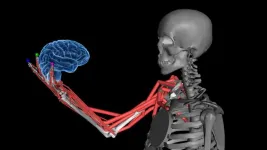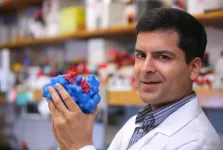(Press-News.org) In a Policy Forum, Alan Schoenfeld and Phil Daro argue that the “equity versus excellence” controversy over how mathematics is taught has long disrupted education in the United States, particularly for underrepresented ethnic and socioeconomic groups. According to Schoenfeld and Daro, K-12 mathematics education in the U.S. is structured in ways that are problematic and do not reflect international trends. For more than 50 years, the typical yet rigid sequence of hierarchical mathematics courses – algebra 1 to geometry to algebra II to precalculus to calculus – has disenfranchised large numbers of students, including a disproportionate number from underrepresented groups. This has led to a false equity versus excellence dichotomy amongst educators and tensions between groups over math curricula and instruction. It’s thought by some that serving the vast majority of students means diluting the content of instruction and limiting the potential of students ultimately pursuing higher education in science, technology, engineering and mathematics (STEM) fields. Here, the authors discuss this issue and suggest that curricular modularity – through which all students can engage in the same high-quality mathematics content together – can help resolve this false dichotomy and end the so-called pedagogical “math wars” between educators and education policy-makers. Schoenfeld and Daro propose an alternative curricular approach based on the concept of modularity, offering three instructional principles. First, curricula should be designed to preserve mathematical pathways and possibilities for all students for as long as possible, regardless of whether they are STEM- or non-STEM-oriented. Second, curricula should be flexible and evolve to reflect new technologies, ideas, and understandings. Third, courses should be suitable for the students required to take them and should provide a robust foundation for later courses. “The ideas embodied by three principles discussed here could be a starting place for breaking out of false dilemmas,” write the authors. “Engaging in academic or political warfare wastes a huge amount of energy that we can ill afford to squander, if we really want to provide richer and more-meaningful learning opportunities for children.”
For reporters interested in topics of research integrity, when asked about the topic, Alan Schoenfed responded, “We are not aware of issues of data integrity in mathematics education. The larger issue is that of theoretical bias: if you frame issues in different ways, you get different data and draw different conclusions. For example, do you examine the impact of an educational intervention by using a test of basic skills or a test that includes skills, concepts, and problem solving? Tests that only focus on skills will fail to capture the impact of interventions that enhance conceptual understanding and problem solving, while tests that address skills, concepts, and problem solving will reveal the inadequacy of skills-focused approaches. Such arguments were at the heart of the original “math wars,” which we refer to in our piece.”
END
A path forward from the “equity versus excellence” conflict that has impeded mathematics education in U.S.
2024-03-21
ELSE PRESS RELEASES FROM THIS DATE:
How butterflies choose mates: gene controls preferences
2024-03-21
Tropical Heliconius butterflies are well known for the bright colour patterns on their wings. These striking colour patterns not only scare off predators – the butterflies are poisonous and are distasteful to birds – but are also important signals during mate selection. A team led by evolutionary biologist Richard Merrill from LMU Munich, in cooperation with researchers from the Universidad del Rosario in Bogotá (Colombia) and the Smithsonian Tropical Research Institute (Panama), has now exploited the diversity of warning patterns of various Heliconius species to investigate the genetic foundations of these preferences. ...
Mysterious exporter for brassinosteroid first identified
2024-03-21
When you are reading this article, there are multiple hormones working diligently inside your body to stabilize your health status. Same as human beings, it is impossible for plants to grow and reproduce without being regulated by phytohormones. One of the phytohormones is the Brassinosteroid (BR) hormones, also named as the sixth phytohormone.
According to a study published in Science on March 22, 2024, researchers led by Prof. SUN Linfeng from the Division of Life Sciences and Medicine of the University of Science and Technology ...
New reactor could save millions when making ingredients for plastics and rubber from natural gas
2024-03-21
Images
A new way to make an important ingredient for plastics, adhesives, carpet fibers, household cleaners and more from natural gas could reduce manufacturing costs in a post-petroleum economy by millions of dollars, thanks to a new chemical reactor designed by University of Michigan engineers.
The reactor creates propylene, a workhorse chemical that is also used to make a long list of industrial chemicals, including ingredients for nitrile rubber found in automotive hoses and seals as well as blue protective gloves. ...
How the brain senses body position and movement
2024-03-21
How does your brain know the position and movement of your different body parts? The sense is known as proprioception, and it is something like a “sixth sense”, allowing us to move freely without constantly watching our limbs.
Proprioception involves a complex network of sensors embedded in our muscles that relay information about limb position and movement back to our brain. However, little is known about how the brain puts together the different signals it receives from muscles.
A new study led by Alexander Mathis at EPFL now sheds light on the question by exploring how our brains create a cohesive sense of body position and movement. Published in Cell, ...
Species diversity promotes ecosystem stability
2024-03-21
Species diversity promotes ecosystem stability
Biodiversity loss may accelerate ecosystem destabilization
What maintains stability within an ecosystem and prevents a single best competitor from displacing other species from a community? Does ecosystem stability depend upon the presence of a wide variety of species, as early ecologists believed, or does diversity do the exact opposite, and lead to instability, as modern theory predicts?
Resolving a long-standing debate among ecologists
A new study from McGill University and ...
University of Calgary research finds a direct communication path between the lungs and the brain
2024-03-21
University of Calgary researchers have discovered the lungs communicate directly with the brain when there is an infection. Findings show the brain plays a critical role in triggering the symptoms of sickness, which may change the way we treat respiratory infections and chronic conditions.
“The lungs are using the same sensors and neurons in the pain pathway to let the brain know there’s an infection,” says Dr. Bryan Yipp, MD '05, MSc'05, clinician researcher at the Cumming School of Medicine and ...
NSF awards grant for evolution-inspired design of therapeutic RNAs
2024-03-21
A team led by Dr. Samie Jaffrey, the Greenberg-Starr Professor of Pharmacology at Weill Cornell Medicine, has been awarded a three-year, $1.65 million grant for RNA research under a biotechnology-development program run by the U.S. National Science Foundation.
The competitive Molecular Foundations for Biotechnology program funds cutting-edge research that lays the groundwork for future clinical and industrial biotechnologies. The new award is one of nine that have been given to research teams across the United States this year, with funding assistance from the National Institutes of Health, to advance the promise of RNA-based therapeutics and ...
Best way to bust deepfakes? Use AI to find real signs of life, say Klick Labs scientists
2024-03-21
NEW YORK, NY / TORONTO, ON – March, 21, 2024 – Artificial intelligence may make it difficult for even the most discerning ears to detect deepfake voices – as recently evidenced in the fake Joe Biden robocall and the bogus Taylor Swift cookware ad on Meta – but scientists at Klick Labs say the best approach might actually come down to using AI to look for what makes us human.
Inspired by their clinical studies using vocal biomarkers to help enhance health outcomes, and their fascination with sci-fi films like “Blade Runner,” the Klick ...
The protein that protects insulin-producing cells
2024-03-21
Although there are many differences between type 1 diabetes and type 2 diabetes, there are also similarities, such as inflammation of the insulin-producing cells. Researchers at Lund University have studied a protein called C3, which plays a central role in the body’s immune system. The protein is secreted from cells and is found in large quantities in the blood. Previous studies by the same researchers have shown that C3 is also present inside cells and plays an important role there. Now, their latest study in PNAS shows that the protein C3 protects insulin-producing cells from damage and death when it is present ...
World’s first N-channel diamond field-effect transistor
2024-03-21
1. A NIMS research team has developed the world’s first n-channel diamond MOSFET (metal-oxide-semiconductor field-effect transistor). The developed n-channel diamond MOSFET provides a key step toward CMOS (complementary metal-oxide-semiconductor: one of the most popular technologies in the computer chip) integrated circuits for harsh-environment- applications as well as the development of diamond power electronics.
2. Semiconductor diamond has outstanding physical properties such as ultra wide-bandgap energy of 5.5 eV, high carriers mobilities, ...





